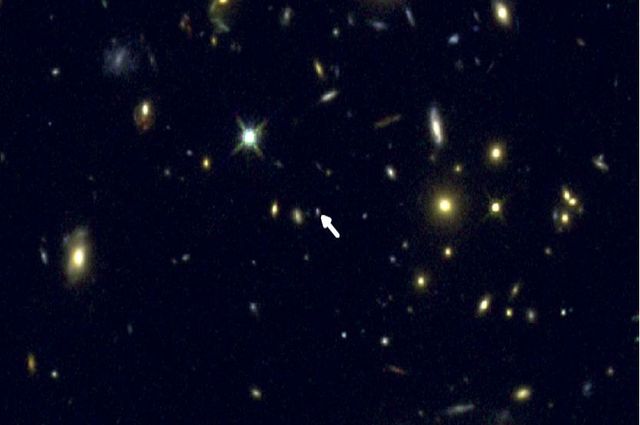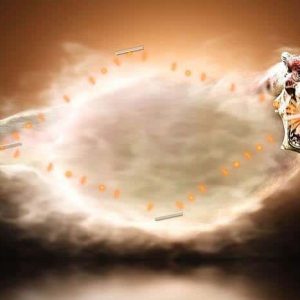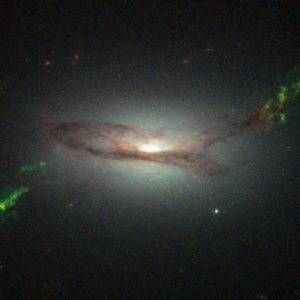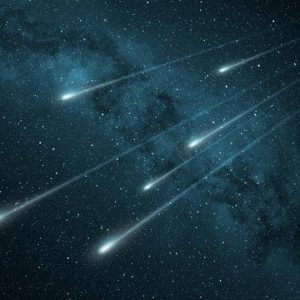UCLA astronomers have designed the very first exact measurement of the abundance of oxygen in a distant galaxy. Oxygen, the 3rd-most plentiful chemical ingredient in the universe, is produced inside of stars and produced into interstellar fuel when stars die. Quantifying the total of oxygen is crucial to knowledge how subject cycles in and out of galaxies.
This research is published online in the Astrophysical Journal Letters, and is primarily based on info gathered at the W. M. Keck Observatory on Mauna Kea, in Hawaii.
“This is by significantly the most distant galaxy for which the oxygen abundance has in fact been calculated,” explained Alice Shapley, a UCLA professor of astronomy, and co-writer of the analyze. “We’re searching back again in time at this galaxy as it appeared 12 billion yrs in the past.”
Figuring out the abundance of oxygen in the galaxy known as COSMOS-1908 is an crucial stepping stone towards letting astronomers to far better recognize the inhabitants of faint, distant galaxies noticed when the universe was only a several billion yrs aged and galaxy evolution, Shapley explained.
COSMOS-1908, includes roughly one billion stars. In distinction, the Milky Way includes roughly 100 billion stars some galaxies in the universe incorporate a lot of a lot more, although some others incorporate a lot of less. Moreover, COSMOS-1908 includes roughly only 20 % the abundance of oxygen that is noticed in the sunshine.
Normally, astronomers depend on particularly oblique and imprecise methods for estimating oxygen abundance for the extensive greater part of distant galaxies. But in this situation, UCLA scientists utilised a immediate measurement, explained Ryan Sanders, astronomy graduate pupil and the study’s direct writer.

“Close galaxies are considerably brighter, and we have a really fantastic system of figuring out the total of oxygen in close by galaxies,” Sanders explained. In faint, distant galaxies, the process is substantially a lot more tough, but COSMOS-1908 was just one situation for which Sanders was capable to implement the “robust” system normally used to close by galaxies. “We hope this will be the very first of a lot of,” he explained.
Shapley explained that prior to Sanders’ discovery scientists did not know if they could evaluate how considerably oxygen there was in these distant galaxies.
“Ryan’s discovery exhibits we can evaluate the oxygen and assess these observations with styles of how galaxies sort and what their historical past of star development is,” Shapley explained.
The total of oxygen in a galaxy is established largely by a few elements: how considerably oxygen arrives from big stars that finish their life violently in supernova explosions — a ubiquitous phenomenon in the early universe, when the amount of stellar births was substantially increased than the amount in the universe currently how considerably of that oxygen will get ejected from the galaxy by so-known as “super winds,” which propel oxygen and other interstellar gases out of galaxies at hundreds of 1000’s of miles for each hour and how considerably pristine fuel enters the galaxy from the intergalactic medium, which does not incorporate considerably oxygen.
“If we can evaluate how considerably oxygen is in a galaxy, it will explain to us about all these procedures,” explained Shapley, who, alongside with Sanders, is fascinated in studying how galaxies sort and evolve, why galaxies have distinct buildings, and how galaxies trade materials with their intergalactic environments.

Shapley expects the measurements of oxygen will expose that tremendous winds are really crucial in how galaxies advanced. “Measuring the oxygen articles of galaxies above cosmic time is just one of the crucial approaches we have for knowledge how galaxies develop, as nicely as how they spew out fuel into the intergalactic medium,” she explained.
The scientists utilised an particularly state-of-the-art and refined instrument known as MOSFIRE (Multi-Item Spectrometer for Infra-Crimson Exploration) mounted on the Keck I telescope at the Keck Observatory. This 5-ton instrument was developed to analyze the most distant, faintest galaxies, explained UCLA physics and astronomy professor Ian McLean, task chief on MOSFIRE and director of UCLA’s Infrared Laboratory for Astrophysics. McLean developed the instrument with colleagues from UCLA, the California Institute of Know-how and UC Santa Cruz and industrial sub-contractors.
MOSFIRE collects seen-mild photons from objects billions of mild yrs absent whose wavelengths have been stretched or “redshifted” to the infrared by the enlargement of the universe. Thanks to the finite pace of mild, MOSFIRE is giving a see of these galaxies as they existed billions of yrs in the past, when the mild very first commenced touring to Earth.
MOSFIRE is a variety of instrument regarded as a “spectrograph,” which spreads the mild from astronomical objects out into a spectrum of different wavelengths (hues), indicating the precise total of strength emitted at each and every wavelength. Spectrographs empower astronomers to ascertain the chemical contents of galaxies, mainly because distinct chemical things — this sort of as oxygen, carbon, iron or hydrogen — each and every offer a distinctive spectral fingerprint, emitting mild at precise wavelengths.
To characterize the chemical contents of COSMOS-1908, Sanders analyzed a unique wavelength in the MOSFIRE spectrum of this galaxy that is delicate to the total of oxygen. “MOSFIRE designed Ryan’s measurement doable,” explained Shapley, who explained it as an “amazing instrument.”
Knowledge for COSMOS-1908 were being gathered as component of the MOSFIRE Deep Evolution Field (MOSDEF) survey, a big Keck Observatory task that Shapley and Sanders have carried out in collaboration with astronomers at UC Berkeley, UC Riverside and UCSD. In between 2012 and 2016, the MOSDEF study was allotted about 50 evenings of MOSFIRE time on the Keck I telescope to analyze distant galaxies forming in the early universe.
The analysis was funded by the two the Nationwide Science Basis and NASA. MOSFIRE was also funded by the Nationwide Science Basis (by way of the Telescope Program Instrumentation method), and by Gordon and Betty Moore.





